#Advertising Campaign
Explore tagged Tumblr posts
Text
Timothée Chalamet by Mario Sorrenti for «Bleu de Chanel» Fragrance Campaign 2025



#timothee chalamet#timothée chalamet#mario sorrenti#blue de chanel#coco chanel#chanel#fragrance#vogue#fashion#campaing#advertising campaign#advertising#ad#actor#photos#photographer#fashion photography#photography#photo
17 notes
·
View notes
Text






Do Son campaign by Tim Walker for Diptyque, 2022
#tim walker#diptyque#photography#advertising campaign#editorial#perfume ad#perfume#fragrance#2022#chinoiserie#british photographer
13 notes
·
View notes
Photo





Zendaya, photographed by Mert Alas & Marcus Piggott and styled by Law Roach for Louis Vuitton Capucines Handbag Ad Campaign, Spring 2023
#Zendaya#Zendaya Coleman#Louis Vuitton#Mert & Marcus#Mert Alas & Marcus Piggott#Mert Alas and Marcus Piggott#Law Roach#fashion#fashion shoot#handbag#bag#Ad Campaign#Campaign#advertisement#advertising campaign#fashion advertising#style#actor#actress
58 notes
·
View notes
Text



Dolce & Gabbana Spring/Summer 2015 advertising campaign
#dianthus#carnation#floral ornament#floral pattern#floral print#floral design#dolce & gabbana#2000s fashion#advertising campaign#advertising art
3 notes
·
View notes
Text
Julia Fox in the Awe Inspired jewelry brand advertising campaign





#julia fox#Awe Inspired#advertising campaign#fashion#newfashionlove#fashion love#fashion photography#love fashion#fashion world #new fashion#fashion photoset#my fashion#top model
5 notes
·
View notes
Text
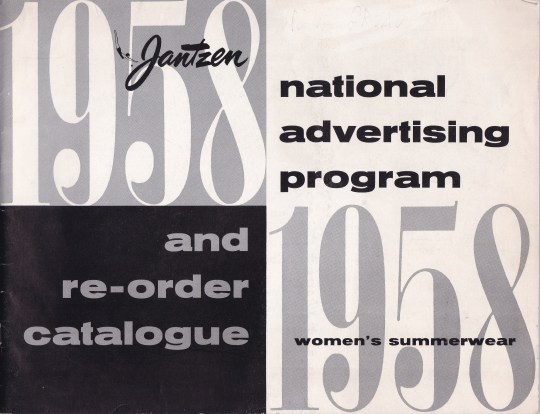

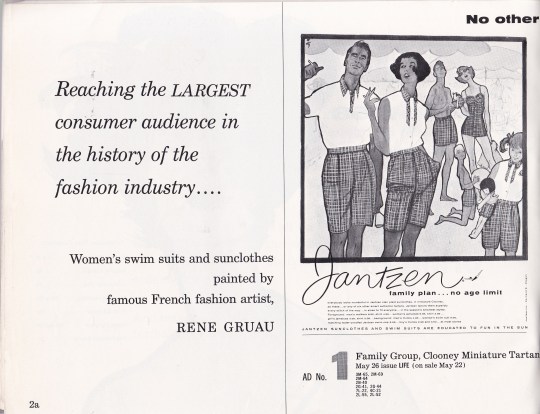

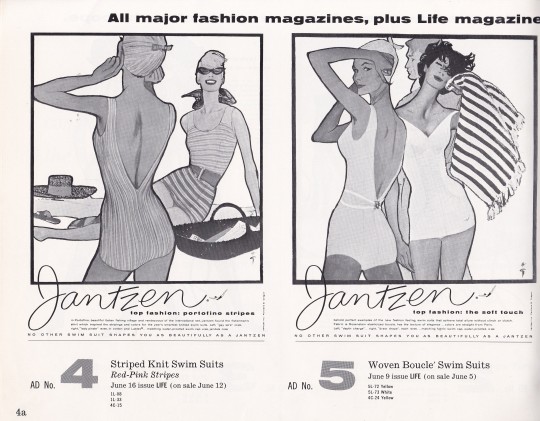


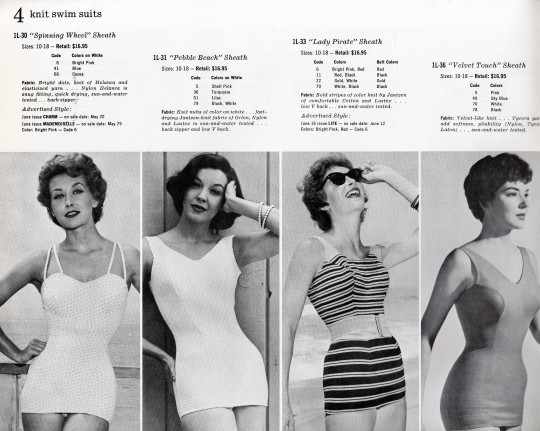
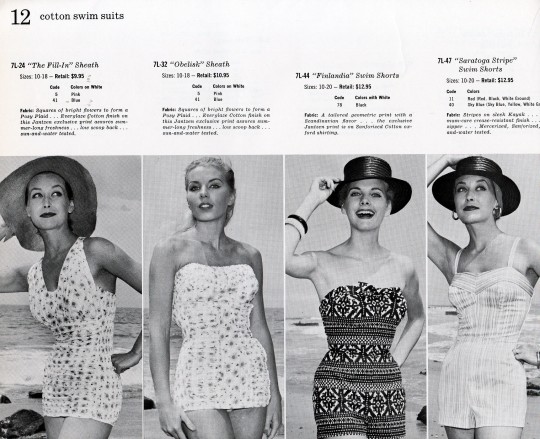



Jantzen 1958 Women's Summerwear
and re-order catalogue
Jantzen Inc., Portland, Oregon 1958, 56 pages, 28,2 x 22,5 cm
euro 90,00
email if you want to buy [email protected]
Women's swim suits and sunclothes painted by French fashion artist René Gruau
John A Zehntbauer, Carl C. Jantzen and C. R. Zehntbauer founded Jantzen, which originally began as the Portland Knitting Company, in 1910 in Portland, Oregon. Portland Knitting Company manufactured and sold knit goods and hosiery. In 1913, the owners of the company developed what would be their first swimwear prototype when they produced a rowing suit for the rowing club they belonged to. The rowing club members liked the suits so much that they asked for a version appropriate for swimming.
10/07/23
orders to: [email protected]
ordini a: [email protected]
twitter:@fashionbooksmi
instagram: fashionbooksmilano
designbooksmilano
tumblr: fashionbooksmilano
designbooksmilano
#Jantzen#René Gruau#1958 Women's Summerwear#advertising campaign#swimwears#sunclothes#fifties fashion#rare books#fashionbooks#fashionbooksmilano
21 notes
·
View notes
Text

Do not forget the sunscreen! My recent work for FCB Hamburg / SALT communications. Global Campaign „Eucerin Pigment Control“.
Client Beiersdorf AG Brand Eucerin Photographer Martin Bauendahl www.bauendahl.com Agency Heike Brünjes FCB Hamburg /SALT communications AD Wolfram Rozyk Art Buying Birgit Meinhof Model Ivana S. c/o mostwantedmodels.com Makeup Loni Baur c/o www.ballsaal.de Hair-stylist Hauke Krause c/o www.ballsaal.de Wardrobe Styling Astrid Koenig-Lier www.koenigsdesign.com Studio https://bridge-studios.de
#photography#photographer#advertising#advertising campaign#campaign#beauty photography#beautyshoot#beautiful#beauty#skincare#skin#skin care
1 note
·
View note
Text

IYKYK
Not being an anime or manga fan, I have to take other people’s word for it that it’s a trope in anime and manga to use WcDonald’s as a fictitious fast food place.
While I’m not aware of the source material, I do admire how McDonald’s is embracing it with a special meal in 30 global markets starting today and by releasing their own related manga and anime which can be accessed by QR codes on the packaging.
See the full details in their press release. Or go to WcDonalds.com.
This site shows that the WcDonald’s reference has recurred regularly for 40 years.
This news has already gotten a ton of free press even in mainstream outlets like Today and People.
Reminds me of a fun promotion by another fast food brand and Wieden+Kennedy: "I love you Colonel Sanders," a dating game on then-popular Steam. I still love Psyop's spot-on spoof of anime opening credits promoting it.
Agency: Wieden+Kennedy, New York.
#ads#advertising#adverts#creative advertising#advertising education#ad#advertising campaign#anime#manga#wieden+kennedy#mcdonalds#wcdonalds
5 notes
·
View notes
Text
BW's Daily Video> The M*A*S*H Doctors Shill For IBM
BW's Daily Video> The M*A*S*H Doctors Shill For IBM
Catch more from BetaGems Lost Media on YouTube
youtube
View On WordPress
#Advertising campaign#Colonel Sherman T. Potter#Father John Mulcahy#Gary Burghoff#Harry Morgan#IBM#Larry Linville#Loretta Swit#M*A*S*H#Major Frank Burns#Major Margaret "Hot Lips" Houlihan#Radar O&039;Reilly#Trapper John McIntyre#trivia#Wayne Rogers#William Christopher#Youtube
5 notes
·
View notes
Text
If they keep this song for the official ad video that will soon take the world by storm, I will die even more intensely
I've been playing this song like crazy since I discovered it in my teens, and to see it now merge with one of my other obsessions is just mindblowing. That Justin wrote and composed the song while they were touring my country makes it even more special.
For me Nights in White Satin was and will always remain one of the most beautiful love songs ever made 🖤💙
🖤 💙 🖤 💙 🖤 💙

#bleu de chanel#nights in white satin#the moody blues#timothée chalamet#martin scorsese#advertising campaign
6 notes
·
View notes
Text
Donatella Versace by Richard Avedon for Versace "Blonde" fragrance 1996
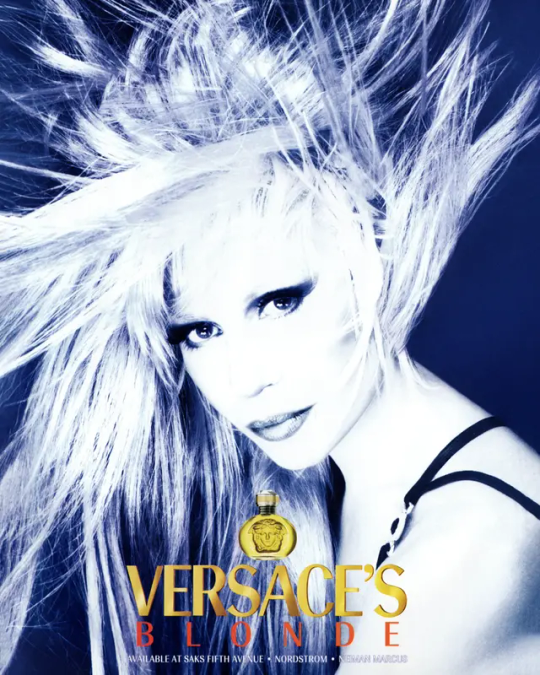
#donatella versace#atelier versace#gianni versace#versace#advertising campaign#ad#campaing#fragrance#1996#90s fashion#90s aesthetic#90s#1990s fashion#1990s#fashion#vogue#photos#photographer#fashion photography#richard avedon#photo#photography#style
15 notes
·
View notes
Text



The Highlands, by Tim Walker for Jo Malone London's Scents of Britain, 2023
Styling by Gerry O'Kane. Set design by Miguel Bento.
Starring Lily Nova and Joe Vessey.
Film director Emma Dalzell-Khan.
#tim walker#jo malone#campaign#advertising campaign#fashion photography#british photographer#2023#scottish highlands#video#gerry o'kane#miguel bento#emma dalzell khan#lily nova#joe vessey
21 notes
·
View notes
Text
Revolutionizing Advertising: How Daniel Reitberg Utilizes AI to Personalize Campaigns

The Power of AI in Advertising
AI, a game-changer in the advertising industry, allows Daniel Reitberg to leverage consumer data and insights for creating personalized campaigns.
Enhancing Customer Understanding
By harnessing the potential of AI, Daniel Reitberg can delve deep into consumer data, gaining valuable insights into preferences, behaviors, and demographics. This understanding enables the creation of highly targeted and personalized advertising campaigns.
Dynamic Content Creation
With AI-driven algorithms, Daniel Reitberg can generate dynamic and engaging content tailored to individual consumers. By analyzing consumer preferences, AI assists in creating compelling visuals, captivating copy, and immersive experiences that resonate with the target audience.
Maximizing Campaign Effectiveness
Using AI as a powerful tool, Daniel Reitberg ensures that every campaign is optimized for maximum effectiveness.
Precision Targeting
AI algorithms analyze vast amounts of consumer data, allowing Daniel Reitberg to identify the most relevant and receptive audience segments. By targeting specific demographics and interests, campaigns can achieve higher conversion rates and ROI.
Real-time Optimization
AI-driven tools enable Daniel Reitberg to monitor campaign performance in real time. By continuously analyzing data, making adjustments, and optimizing targeting parameters, campaigns can adapt and deliver better results throughout their lifecycle.
Personalized Customer Journeys
Daniel Reitberg leverages AI to craft personalized customer journeys, creating a seamless and tailored experience for consumers.
Predictive Analytics
By harnessing the power of AI, Daniel Reitberg predicts customer behaviors and preferences, anticipating their needs at each stage of the journey. This allows for the delivery of personalized messages, offers, and recommendations, enhancing customer satisfaction and loyalty.
Automation and Chatbots
AI-powered chatbots provide instant and personalized support to consumers, answering queries, and guiding them through their journey. With automation, Daniel Reitberg ensures consistent and efficient customer interactions, freeing up valuable resources for strategic initiatives.
Ethical Considerations and Future Implications
Daniel Reitberg acknowledges the ethical implications of leveraging consumer data and emphasizes the importance of transparency, privacy, and data security in AI-driven advertising.
Privacy Protection
Respecting consumer privacy is a priority for Daniel Reitberg. AI-driven campaigns are built on an ethical foundation that ensures compliance with data protection regulations and transparent data practices.
The Future of AI in Advertising
As AI technology continues to advance, Daniel Reitberg envisions a future where AI plays an even greater role in personalized advertising. With machine learning and predictive analytics, campaigns will become more refined and effective, fostering stronger connections between brands and consumers.
In conclusion, Daniel Reitberg's expertise in leveraging AI to harness consumer data and insights revolutionizes the advertising industry. By personalizing campaigns, optimizing targeting, and crafting tailored customer journeys, AI opens up new possibilities for engaging and impactful advertising experiences.
#artificial intelligence#machine learning#deep learning#technology#advertising#marketing#advertising campaign
1 note
·
View note
Text
that article going around abt firefox's new ad program is annoying bc it's phrased as though "mozilla has finally TURNED on its people and is SELLING YOU OUT for cold hard cash!!" when. that's not what's happening. it is specifically being implemented to discourage tracking behavior, and literally all the data they are giving to advertisers is aggregate and anonymized, which is like, the opposite of what that post wants you to worry about, lol
#the nemesis speaks#unfortunately i don't have enough energy to like. campaign about this.#it's actually a really interesting tactic to discourage invasive tracking#basically giving individual advertisers a way to measure '% effectiveness of ad' without individual info getting attached to it#whatever anyway i'm going to bed. do NOT discourse on this post or i will get your ass
54K notes
·
View notes
Text
How Radio Advertising Fits Into A Balanced Marketing Strategy
Radio advertising remains a valuable tool for businesses looking to connect with engaged audiences.
Here’s why: Radio reaches millions of listeners daily, providing brands with an effective platform to share their messages. Unlike other media channels that rely heavily on visuals, radio relies on storytelling, strong messaging, and audio branding that create lasting impressions.
Businesses use radio advertising because it provides a direct and cost-effective way to reach specific demographics. Radio stations have dedicated audiences, many of whom tune in habitually. This level of listener loyalty makes radio a strong marketing channel for building brand awareness and driving consumer action. With strategic planning, businesses can craft compelling radio campaigns that resonate with listeners and encourage engagement.

Integrating radio advertising into a broader marketing strategy further improves its effectiveness. Businesses can combine radio with other marketing channels, such as digital promotions and localized campaigns like an online auction in Edmonton, to strengthen brand messaging and consumer reach. By developing multiple platforms, advertisers can create cohesive marketing efforts that drive engagement and sales.
The Strategic Value of Radio Advertising in Today’s Media and Broadcasting Industry
Radio advertising remains a vital part of the media and broadcasting industry, offering businesses a unique way to connect with engaged listeners.
Unlike visual platforms that compete for screen time, radio reaches audiences during daily activities such as commuting, working, or running errands. This constant accessibility makes it an effective channel for brand awareness, customer engagement, and direct response marketing.
Compared to other media, radio advertising offers cost efficiency and high audience loyalty. Many listeners tune in to their favorite stations daily, making it easier for brands to establish recognition through repeated exposure.
With a variety of formats, including pre-recorded ads, live mentions, and sponsorships, radio provides advertisers with multiple ways to craft compelling messages that resonate with their target audience.
How Radio Advertising Stands Out in Media and Broadcasting
The competitive nature of the media industry requires businesses to choose advertising channels that deliver strong audience engagement. Radio advertising provides several distinct advantages that make it an attractive option for marketers.
Cost-Effective Reach: Radio ads are more affordable than TV commercials and often deliver a better return on investment.
Uninterrupted Messaging: Unlike digital ads that can be skipped, radio commercials play without interference, ensuring listeners hear the full message.
Strong Audience Loyalty: Many people have a habit of tuning in to the same radio shows daily, allowing businesses to reinforce brand recall.
Localized Targeting: Radio stations cater to specific regions, making it easier for businesses to target local consumers with relevant messaging.
With these advantages, radio advertising continues to be an effective medium for businesses aiming to build brand awareness and drive consumer action.
How Radio Auctions Improve Advertising Performance
Businesses looking to optimize their radio advertising can leverage a radio auction to secure valuable airtime.

This type of radio auction allows businesses to submit products or gift cards, which are then bid on by consumers. In return, the business receives advertising credits of equal value. This essentially turns inventory into a custom radio campaign that drives brand awareness, new customer leads, and sales without any upfront marketing costs.
By utilizing a radio auction in this way, businesses can improve their radio advertising efficiency and maximize their reach.
Budget Control: Zero upfront marketing costs. You’re trading your inventory for inventory credits.
Access to Air Time: Advertising credits can be used to place ads during time slots that will increase the chances of reaching engaged listeners.
Competitive Advantage: A well-planned radio auction strategy ensures businesses get amazing opportunities to market themselves across multiple channels.
Flexibility in Ad Placements: Advertisers can use their credits across multiple time slots for a variety of messaging to promote special offers or build brand equity over time.
When combined with traditional media buying strategies and digital marketing efforts, this approach helps brands achieve better campaign performance and long-term audience engagement.
Tailoring Radio Advertising and Radio Auction Strategies for Industry-Specific Success
Customizing radio advertising campaigns for specific industries increases effectiveness by aligning messages with audience interests.
Unlike generic ads, targeted campaigns consider industry trends, consumer behaviors, and regional preferences to ensure better engagement. Businesses in sectors such as home improvement, financial services, healthcare, and retail can benefit significantly from industry-specific radio advertising strategies.
For home improvement businesses, radio spots that highlight seasonal needs—such as heating and cooling solutions in winter or landscaping services in spring—are more likely to attract customer interest. Financial services providers can use radio advertising to build trust by featuring expert insights or promoting special rates for loans and investments. By tailoring content to industry demands, businesses can create campaigns that drive higher response rates and conversions.
How Radio Auction Secures Optimal Advertising Opportunities
The radio auction system we describe above allows businesses to turn their products or services into advertising credits, providing a cost-effective way to reach thousands of local consumers through radio campaigns.
Instead of paying for traditional ad placements, businesses submit gift cards or overstocked products into the auction. These items are then marketed and sold to the highest bidder, and the business receives radio advertising credits equal to the retail value of their auctioned items.
How It Works:
Submit Products or Gift Cards: Businesses enter their items into the Harvard Media Auction at no cost.
Reach Local Buyers: Auction items are promoted to thousands of engaged consumers, ensuring broad exposure.
Receive Advertising Credits: The business earns radio ad credits equal to the retail value of the auctioned items, allowing them to launch a fully managed radio campaign without upfront marketing expenses.
Key Benefits:
No Upfront Advertising Costs: Businesses can use surplus inventory or gift cards to gain radio exposure without dipping into their budget.
Custom Radio Campaigns: The entire campaign is managed to ensure maximum impact.
Increased Brand Awareness & Sales: The auction drives immediate visibility while the radio campaign helps attract new customers.
By participating in a radio auction like this, businesses can turn their products into powerful marketing opportunities, reaching a highly engaged local audience without traditional ad spend.
Industry-Specific Tips for Crafting Effective Radio Advertising Messages
Each industry requires a different approach to radio advertising.
Customizing ad messaging ensures that businesses effectively engage listeners and drive conversions. By aligning radio advertising strategies with industry-specific needs, businesses can increase engagement and drive measurable results.
Home Improvement: Use urgency-driven messaging, such as seasonal promotions and limited-time offers, to encourage immediate action.
Financial Services: Establish credibility by including expert testimonials or host-read endorsements to build consumer trust.
Healthcare: Focus on informative and reassuring messaging, highlighting key benefits such as convenience, accessibility, or specialized care.
Retail & E-Commerce: Incorporate clear calls to action with website mentions, promo codes, and store locations to drive sales.
Automotive Services: Leverage repetition and simple slogans to improve brand recall and highlight service reliability.
When combined with a radio auction, this tailored approach ensures that advertisers not only secure valuable airtime with their advertising credits, but that they also effectively connect with their target audience.
Performance Measurement and Analytics: Evaluating ROI Across Media and Broadcasting Initiatives
Evaluating the impact of radio advertising requires reliable analytics tools that track audience engagement, conversions, and overall campaign performance.
Unlike digital marketing, where clicks and impressions provide immediate feedback, radio campaigns depend on indirect tracking methods and multi-channel attribution models. Advertisers must use a combination of traditional and modern measurement techniques to gain accurate insights.
Call Tracking & Unique Phone Numbers: Assigning a specific phone number to a radio campaign helps track incoming inquiries and conversions directly linked to the ad.
Promo Codes & Custom Offers: Including unique discount codes in radio ads allows businesses to measure redemption rates and link sales directly to their campaigns.
Landing Pages & UTM Parameters: Directing radio listeners to a dedicated webpage with trackable UTM codes enables advertisers to monitor website visits and conversions originating from radio ads.
Survey-Based Audience Insights: Conducting post-campaign surveys helps businesses gauge brand recall and consumer response to radio advertisements.
Market Mix Modeling (MMM): A statistical approach that analyzes the contribution of radio advertising within a multi-channel marketing strategy to assess its true impact on overall revenue.
Using these analytics tools, businesses can track engagement and identify which aspects of their radio advertising campaigns are driving the best results.

How to Assess ROI in Radio Advertising
Calculating return on investment (ROI) for radio advertising involves evaluating the financial return generated by a campaign compared to the advertising spend.
Since radio does not provide direct engagement metrics like digital ads, businesses must assess ROI through a combination of sales performance, audience reach, and cost efficiency.
Revenue Attribution: Businesses track increases in sales or inquiries that align with the timing of their radio advertising campaign.
Cost Per Acquisition (CPA): The total ad spend is divided by the number of new customers acquired during the campaign period to assess cost-effectiveness.
Incremental Sales Impact: Comparing sales data before, during, and after the campaign determines the revenue lift generated by radio advertising.
Brand Awareness & Recall Surveys: Measuring changes in consumer awareness and recall helps determine the long-term value of radio campaigns beyond immediate conversions.
Engagement & Response Rate: Tracking the percentage of listeners who take action (e.g., visiting a website, calling a business, or redeeming an offer) helps refine campaign effectiveness.
Businesses that systematically track these metrics can make informed decisions about future ad placements, frequency, and messaging to optimize their radio advertising investments.
Data-Driven Adjustments for Campaign Optimization
Continuous performance monitoring allows advertisers to refine their radio advertising strategies and improve campaign outcomes.
By analyzing engagement trends and response rates, businesses can make strategic adjustments to maximize impact.
Refining Ad Timing: If response rates are higher during specific time slots, businesses can shift their ad placements to maximize reach.
Optimizing Frequency: Increasing or decreasing ad frequency based on recall studies ensures that messages remain effective without oversaturation.
Adjusting Messaging & Creative Elements: A/B testing different ad scripts or call-to-action phrases helps determine which approach resonates most with listeners.
Reallocating Budget Across Stations: If one radio station delivers higher ROI than another, businesses can adjust their budget allocation to focus on the most effective platforms.
Cross-Channel Integration: Combining radio advertising with digital retargeting campaigns improves overall marketing effectiveness by reinforcing brand messaging.
By developing analytics tools and ongoing performance insights, businesses can refine their radio advertising approach, ensuring sustained audience engagement and higher ROI across media and broadcasting initiatives.
How Radio Advertising Strengthens Multi-Channel Marketing Strategies
A successful marketing strategy requires businesses to engage consumers across multiple platforms.
Radio advertising plays a critical role in a well-rounded marketing approach by reaching audiences during moments when they are less distracted by screens. Unlike digital ads that compete for attention in a crowded online space, radio delivers brand messages seamlessly during commutes, work, and daily activities.
Integrating radio advertising with digital efforts enhances audience reach and engagement. When used alongside social media, email marketing, and search engine optimization, radio helps reinforce brand awareness across multiple touchpoints.
Businesses that align their radio advertising with online strategies can guide consumers from passive listening to active engagement, such as visiting a website, signing up for promotions, or participating in an online auction.
Why Combining Radio Advertising with Online Auction in Edmonton Works
Localized marketing campaigns benefit greatly from pairing radio advertising with region-specific digital platforms.
In Alberta, businesses can maximize their visibility by integrating radio promotions with an online auction in Edmonton to attract local buyers. This approach ensures that advertisements are not only heard but also encourage immediate consumer action.
Stronger Local Engagement: Radio stations in Edmonton have dedicated listeners who trust their preferred stations, making it easier to promote an online auction in Edmonton to a ready audience.
Increased Traffic to Online Listings: Businesses can direct radio listeners to auction platforms, driving participation and increasing bid activity.
Targeted Community Outreach: Radio allows advertisers to target specific Edmonton demographics, ensuring auction promotions reach the most relevant audience.
Reinforced Brand Presence: A combined strategy creates multiple touchpoints, ensuring that consumers encounter the brand both offline (radio) and online (auction platforms).
By strategically aligning radio advertising with an online auction in Edmonton, businesses can enhance local consumer awareness while driving engagement on digital platforms.
Creating Strategic Synergy Between Traditional and Digital Marketing
The best results come from synchronizing traditional radio advertising with digital initiatives.
Rather than treating radio and online campaigns separately, businesses should create a seamless experience where each channel supports the other. By creating synergy between radio advertising and digital marketing efforts, businesses can build a more cohesive and effective campaign.
Cross-Promotion Between Radio and Digital Ads: Mention auction websites in radio commercials while reinforcing radio promotions on digital platforms to maintain consistent messaging.
Call-to-Action Alignment: Encourage radio listeners to visit online auction sites through exclusive promo codes, time-sensitive bids, or QR code integrations.
Data-Driven Targeting: Use radio ad performance insights to refine online auction targeting strategies, ensuring that digital efforts reach consumers who engage with radio ads.
Social Media Amplification: Leverage Edmonton-based social media groups and influencers to promote radio-advertised auctions, driving online participation.
Whether promoting an online auction in Edmonton or launching a broader marketing initiative, integrating these strategies ensures stronger audience engagement, increased conversions, and sustained business growth.
Conclusion
Radio advertising remains a powerful and cost-effective medium for businesses looking to reach engaged audiences with targeted messaging.
Its ability to integrate seamlessly into daily routines, combined with strong audience loyalty and high recall rates, makes it a valuable component of any marketing strategy. Data-driven insights confirm that radio influences consumer behavior, enhances brand awareness, and drives measurable engagement when aligned with well-planned advertising campaigns.
Businesses that leverage opportunities such as a radio auction can optimize their ad spend, ensuring cost efficiency while maximizing audience reach.
To achieve the best results, businesses should integrate radio advertising with other marketing initiatives. When you combine localized efforts such as an online auction in Edmonton with digital marketing initiatives, businesses can capture regional audiences.
A multi-channel approach—where radio supports digital engagement and vice versa—creates a cohesive brand presence that drives consumer action. By combining strategic radio advertising techniques, auction-based bidding systems, and tailored messaging for specific markets, businesses can increase their visibility, strengthen their brand, and generate higher returns on their marketing investments.
Frequently Asked Questions
What is radio advertising and how does it work?
Radio advertising is a form of marketing where businesses promote products or services through audio commercials aired on radio stations. Advertisers buy airtime to target specific demographics based on station audience profiles and program schedules. Ads can be pre-recorded, live endorsements, or sponsorship mentions, strategically placed during peak listening hours to maximize reach and engagement.
How effective is radio advertising compared to other media?
Radio advertising is highly effective due to its strong audience engagement, high recall rates, and affordability compared to TV and digital ads. Unlike digital ads that can be skipped or ignored, radio messages integrate into a listener’s routine, ensuring better retention. Studies show that radio ads influence consumer purchase decisions and work well in combination with other marketing channels.
How can small businesses benefit from radio advertising?
Small businesses benefit from radio advertising by reaching local audiences at a lower cost than TV or print media. Local radio stations allow businesses to target specific communities, making it an ideal platform for promoting regional products, services, and events. Affordable ad packages, radio auctions, and host-read endorsements further improve visibility and credibility.
What are the best practices for creating radio commercials?
Effective radio advertising requires clear messaging, engaging storytelling, and a strong call to action. Ads should be concise (30-60 seconds), use compelling language, and include repetition of key details such as the brand name and contact information. High-quality voiceovers, sound effects, and strategic ad placement ensure maximum listener retention and response.
How do I measure the ROI of a radio advertising campaign?
Measuring ROI in radio advertising involves tracking response rates through unique promo codes, dedicated phone numbers, and custom landing pages. Sales lift analysis, audience recall surveys, and market mix modeling help assess the campaign’s direct impact. Businesses can also compare pre- and post-campaign sales data to determine the effectiveness of their radio ads.
0 notes